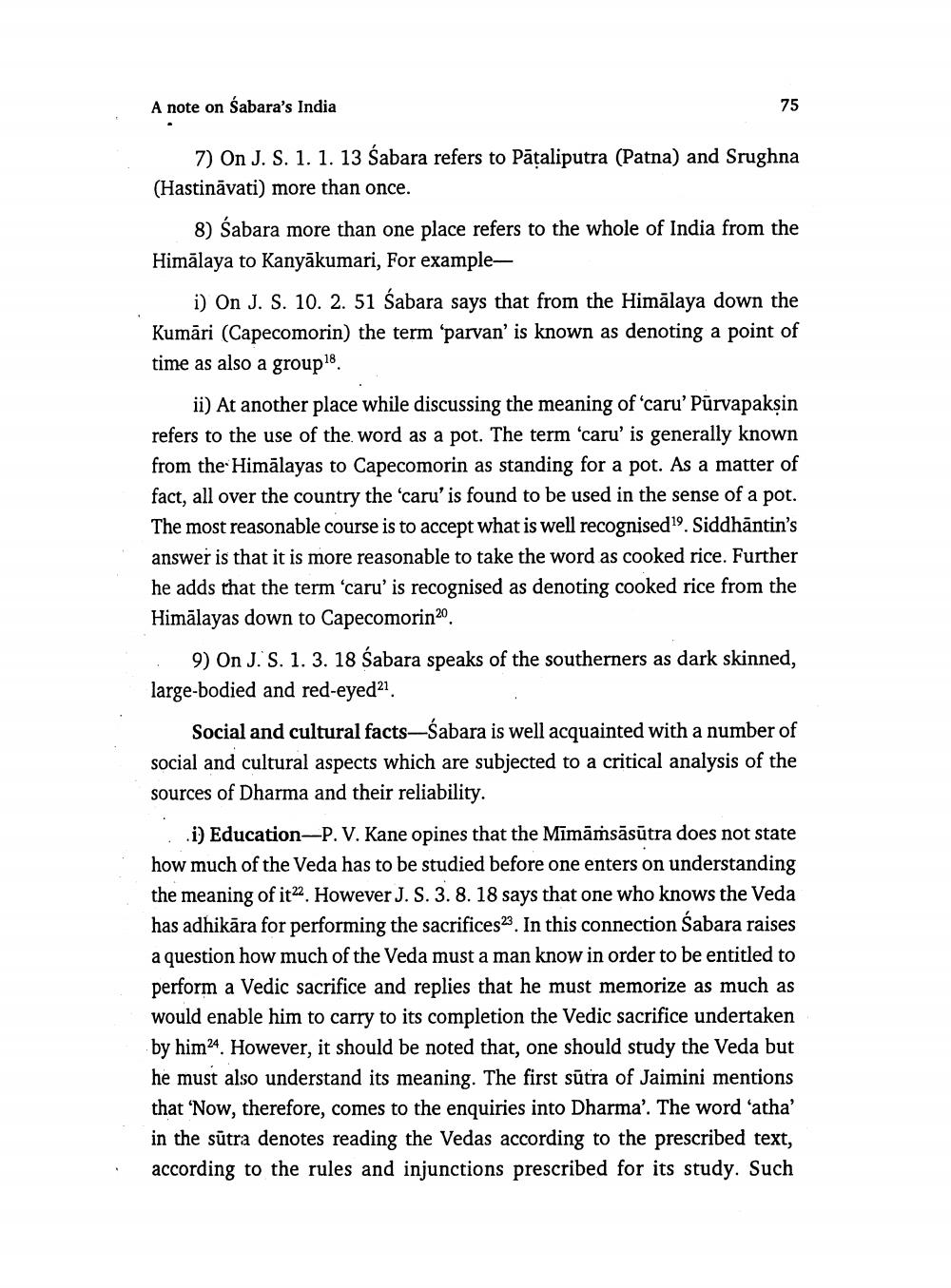________________
A note on Sabara's India
7) On J. S. 1. 1. 13 Śabara refers to Pataliputra (Patna) and Srughna (Hastināvati) more than once.
75
8) Śabara more than one place refers to the whole of India from the Himalaya to Kanyakumari, For example
i) On J. S. 10. 2. 51 Śabara says that from the Himalaya down the Kumāri (Capecomorin) the term 'parvan' is known as denoting a point of time as also a group.
ii) At another place while discussing the meaning of 'caru' Purvapakṣin refers to the use of the word as a pot. The term 'caru' is generally known from the Himalayas to Capecomorin as standing for a pot. As a matter of fact, all over the country the 'caru' is found to be used in the sense of a pot. The most reasonable course is to accept what is well recognised. Siddhantin's answer is that it is more reasonable to take the word as cooked rice. Further he adds that the term 'caru' is recognised as denoting cooked rice from the Himalayas down to Capecomorin"".
9) On J. S. 1. 3. 18 Śabara speaks of the southerners as dark skinned, large-bodied and red-eyed11.
Social and cultural facts-Śabara is well acquainted with a number of social and cultural aspects which are subjected to a critical analysis of the sources of Dharma and their reliability.
i) Education-P. V. Kane opines that the Mimämsäsutra does not state how much of the Veda has to be studied before one enters on understanding the meaning of it. However J. S. 3. 8. 18 says that one who knows the Veda has adhikara for performing the sacrifices". In this connection Śabara raises a question how much of the Veda must a man know in order to be entitled to perform a Vedic sacrifice and replies that he must memorize as much as would enable him to carry to its completion the Vedic sacrifice undertaken by him. However, it should be noted that, one should study the Veda but he must also understand its meaning. The first sutra of Jaimini mentions that 'Now, therefore, comes to the enquiries into Dharma'. The word 'atha' in the sutra denotes reading the Vedas according to the prescribed text, according to the rules and injunctions prescribed for its study. Such




